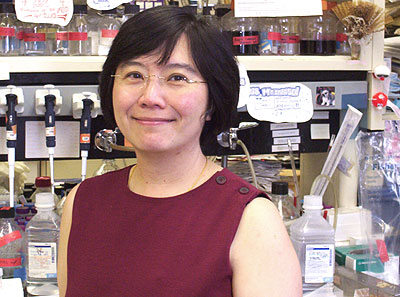| Pi-Chen Yam | |||
|
|
|||
In situ localization of intestinal bacteria in germfree GALT |
|||
|
|
|||
|
|
Intestinal flora are required both for development of gut-associated lymphoid tissue (GALT) and for generation of the primary antibody repertoire. The mechanism by which intestinal bacteria mediate these processes is not known. I study the initial stages of GALT development by introducing select bacteria and their mutants into germfree GALT and at various times following their introduction, I determine the fate of the organisms within GALT. We have identified two bacteria, Bacteroides fragilis (B. fragilis) and Bacillus subtilis (B. subtilis), which if introduced separately into an appendix made germfree by ligating the lumen, do not regularly promote GALT development; however, introduced together, B. fragilis and B. subtilis strongly promote GALT development. We hypothesize that each of these bacteria provides a necessary but not sufficient signal to initiate B cell proliferation leading to GALT development. I follow the fate of GFP-expressing bacteria introduced into the lumen of a germ-free appendix by using fluorescent antibodies to B and T cells, dendritic cells and macrophages, and examining the tissues by confocal microscopy. From these studies we will determine whether B. fragilis and B. subtilis are localized in different cellular compartments and whether the inability of some bacterial mutants to promote GALT development is due to differential uptake by, or localization within, GALT. |
||
|
|||
